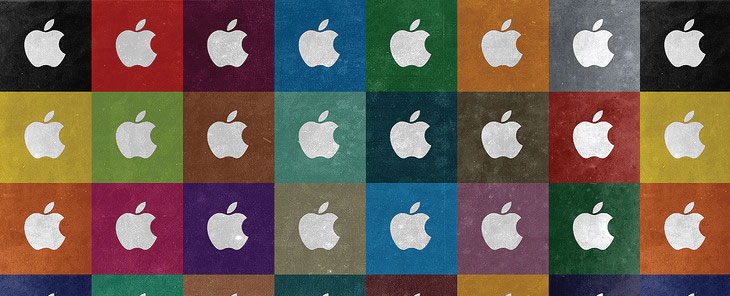15 Logo Design Tips for the Real World

While I have experienced both successes and failures as a designer, one thing is for sure, I have certainly learnt a lot along the way. To impart some of this knowledge, in this post, you will find fifteen useful logo design tips.
1. It all starts with the brief
Okay, this first one is really a given. Building a comprehensive design brief upfront is vital to the success of a logo design project. It will become your point of reference throughout the project, ensuring that requirements are understood and everything stays on track
Some clients may be reluctant to provide enough detail in the brief – dismissing its importance. When you encounter this problem, it is important not to give up and proceed with a half-baked brief. Educate your client on the importance of the brief and follow-up for more infomation until satisfied. Its not always easy, but well worth the effort.
A weak brief will almost always lead to a weak logo.
2. Its a problem solving exercise
Approach each logo design project as a problem solving exercise. Research your clients’ background and market. Put on your analytical thinking cap.
Some clients say that they ‘just need a logo’, but this is rarely the case. Dig deeper. What is the purpose of the logo? Who does it need to appeal to? What is the clients goal and how can I help them achieve it?
Advise and guide your client with your expertise. Design is your problem solving tool.
3. Simple = Memorable
As a rule of thumb, simple logos are usually more memorable. Think Nike, Apple, McDonalds, etc. A memorable logo will also aid brand recognition.
4. Subtract, don’t add
Carrying on from the last point, good logo design is typically a process of reduction. When designing a logo, don’t think, what can I add to this design to make it better? Instead think, what can I reduce from this design to make it more memorable?
5. Sketch, sketch, and sketch again
It is usually best to start with pen and paper before moving to the computer. Ideas tend to come easier while drawing freehand. Perhaps it is our primal connection with drawing (random: humans have been drawing for an estimated 32,000 years), or perhaps there is simply less tendency to become distracted. It’s likely both.
6. Avoid the obvious
A logo does not have to say what a company does. For example, a logo for a dentist does not have to feature a tooth. Due to overuse, these types of logos have become clichés, and are usually best avoided.
Instead of depicting what a company does in a logo, concentrate on developing a meaningful concept. Analyse how your client got to be where they are and where they want to be. Look for messages that will resonate with their audience.
7. Focus on one concept, maybe two
Regarding the number of logo concepts designed, less is usually more.
It’s invariably more effective to develop one or two really strong ideas with your client, then to produce five or six watered down concepts.
8. Don’t follow logo trends
Trends come and go and really should be avoided at all costs. Logo design should be timeless.
It’s both unfair and unprofessional to burden a client with a logo that’s likely go out of fashion in a few short months or years.
9. Take your time
Rushed logos are seldom good logos. Logo design is a process of weeks (often months), not days. While it is understandable that some clients have tight deadlines, expectations should be kept realistic.
Allow sufficient time to research your client and explore all possible avenues.
If possible, also budget enough time to step away from a logo project for a few days. More often than not you will return to it with a completely new perspective.
10. Seek client feedback
Right from the outset, actively seek feedback from your client and include them in the creative process. This ensure that all parties understand the direction of the project and no time is spent exploring wasted concepts.
A client who feels invested in the process is much more likely to approve the final design.
11. Design in black and white
Design a logo in black and white until you’re satisfied with the basic form of the design. Don’t rely on colour or effects to enhance a poorly conceived concept.
12. Don’t compare yourself to other designers
Logo gallery and inspiration sites are full of highly rated logos that weren’t designed for the real world. Comparing your own logos against these sites is short-sighted.
While a particular logo may look impressive, unless it was designed for a client, its just a pretty picture.
Do you own thing. Design for your client (and their audience), not your portfolio.
13. Think identity, not just logo
Even if your client doesn’t request it, consider how a logo could be utilised as part of an overall identity system. Not only will this usually lead to the development of a more adaptable design, if/when your client grows, the logo will have the flexibility to grow with them.
14. Don’t neglect typography
Type selection shouldn’t be an afterthought. Choosing the right font can either make or break a logo.
Its usually better to avoid poorly made free fonts. Money invested in great typefaces can really make a huge difference to the quality of your work.
15. Present logo concepts in context
When presenting logo concepts to clients include context mock-ups. Choose appropriate images for your client, be it business cards or billboards. Photoshop is your friend in this instance.
Not only will it look impressive, but it will also help your client visualise how the logo will look in the real world. This is often enough to seal the deal.
Do you have anything else to add? Please share your opinion in the comments section below.